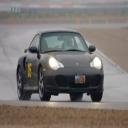Yahoo Answers is shutting down on May 4th, 2021 (Eastern Time) and the Yahoo Answers website is now in read-only mode. There will be no changes to other Yahoo properties or services, or your Yahoo account. You can find more information about the Yahoo Answers shutdown and how to download your data on this help page.
Trending News
Describe difference between water-cooled turbocharger, air-air turbo intercooler, water-air turbo intercooler?
The new Porsche 911 Turbo has a "water-cooled turbocharger" (http://www.porsche.com)./ Does this mean it employs a water-to-air intercooler (really an aftercooler) on that turbocharger as opposed to an air-to-air intercooler, or is it something else?
Is this something new, or have all 911 turbochargers (or intercoolers) been "water-cooled" since the type 996 911 with its water-cooled engine was introduced?
We're getting close to a complete answer. The 996 & 997 Turbos are water cooled.
There are also oil-air intercoolers. What kind of intercoolers are used on 996 and 997 Porsche Turbos?
These answers are good. I should have said "996 and 997 turboCHARGERS are water cooled. I appreciate the descriptions of the parts of the system (I understand; I'm a mechanical engineer). The last part I'm trying to get: are the intercoolers air-to-air or water-to-air heat exchangers in the 996?
5 Answers
- 1 decade agoFavorite Answer
Porsche has used water cooled turbochargers since the 944 turbo (and most likely on the race track before that). Basically, the turbo is fed coolant from the same engine cooling system used to cool the rest of the car.
An intercooler is used to cool the incoming air prior to combustion. Most are air-to-air as the size and and added weight of a water-air does not make up for the efficiency gains (near zero anyhow).
The 944 turbo, 996 turbo, 996 GT2, and all 997 turbo variants have water cooled turbos. The water cooling allows them to be run reliably at elevated boost levels. Additionally, there is usually a pump to keep water running through the turbo after the car is shut down.
- G6erLv 61 decade ago
I don't know enough about the history of porches to speak knowledgably on that aspect, however i can tell you that a water cooled turbo charger is different from an air or water intercooler.
An intercooler is designed to cool the air going into the engine. When air is compressed by a super charger, or a turbo charger, the forces that were placed on the air cause it to heat up. As most people who are in the business of making power know, hot air is bad and cool air is good. So an intercooler gets the air to be nice and cool.
An air, water or oil cooled turbocharger refers to the method by which the actual turbocharger is being cooled. Because they spin at such high RPM's they generate incredible heat. Most turbo's are oil cooled which is why you are suppose to idle the car for a minute before turning it off after use. If you turn off the engine right away, the oil is no longer pumped into the turbo and you can burn up your bearings.
So water cooled is just a different method of cooling off the actual turbocharger. I believe it works alot like the system to cool your eninge.
- Anonymous5 years ago
Air cooled systems, as found on the VW Beetle, Fiat 500 and many motorcycles uses thin metal vanes attached to the engine to disperse heat into the air. Some vehicles, such as the Beetle, have a cooling fan to assist the process. This method has the advantage of simplicity but mean that it is diffiicult to keep the engne at an optimum working temperature for power or efficiency. Water cooled engines have a series of channels in the engine block and head through which water is pumped. This water also supplies heat to the vehicle heater in the passenger compartment. The water is cooled via a radiator which is usually at the front of the vehicle, though some cars such as the early Mini had the radiator to the side. Rear engined cars might have the radiator at the back. The radiator is cooled by air passing through it as the vehicle is driven (this is called Ram cooling). When moving slowly then there is not sufficient air flow and an electric cooling fan will cut in automatically to compensate. Old cars had a fan permanently driven by belt on the cranksahft pulley. This method did not cool as well and also meant that a little power was always being stolen from the engine. Between the engine and the radiator is a thermostat which keeps the engine at the right temperature. As it starts to get quite hot the thermostat opens to allow cooling water through from the radiator. Thermostats are normally set quite hot for fuel efficiency. Racing cars may use a colder thermostat as a slightly cooler engine gives better performance.
- TeeLv 51 decade ago
You are talking about two different parts of the system. Water cooling a turbocharger keeps the turbocharger cool and prevent the bearings from getting too hot. Normally turbochargers are feed oil and the oil cools and lubes the bearing.
Intercooler or aftercoolers cool the air charge that is entering the engine. This is done to reduce the point of detention in the combustion chamber. It and be air to air meaning that the cooler has the air charge running through a device that has air running over the outer surface to cool the air charge before the air charge enters the chamber. Air to water coolers use a coolant that circulates and pull heat out of the air charge and then passes the heat out the cars engine cooling system or it may have a separate radiator that only deals with the air charge heat.
Both the air to air and the air to water allows the air charge to be denser which makes more horsepower.



